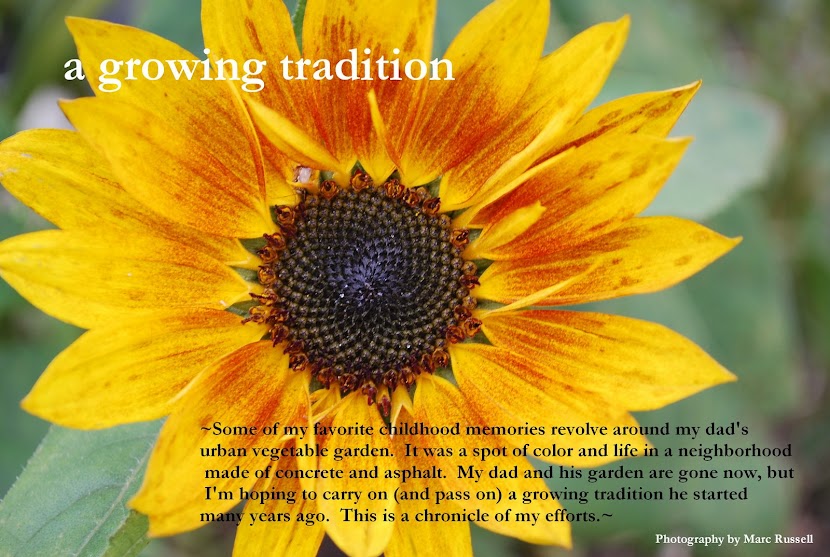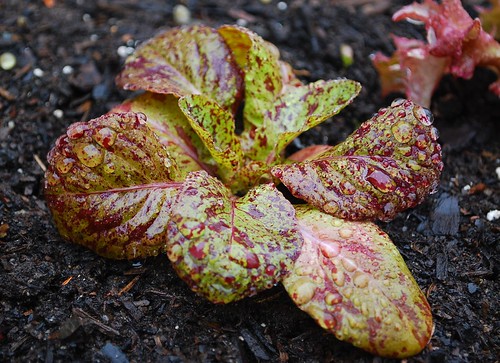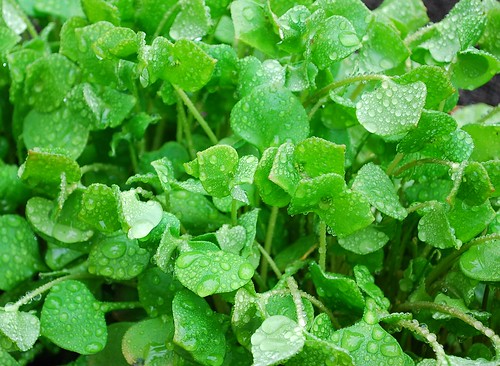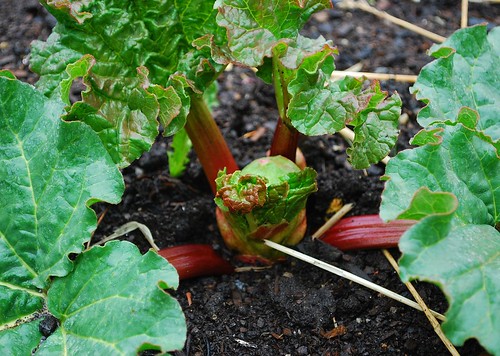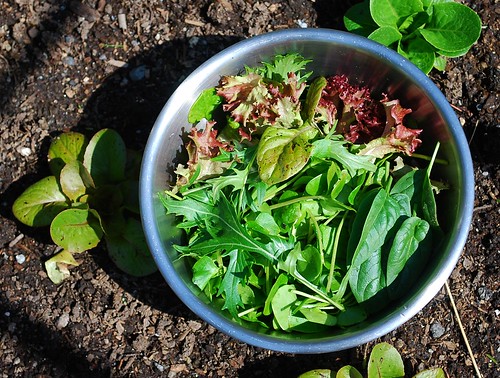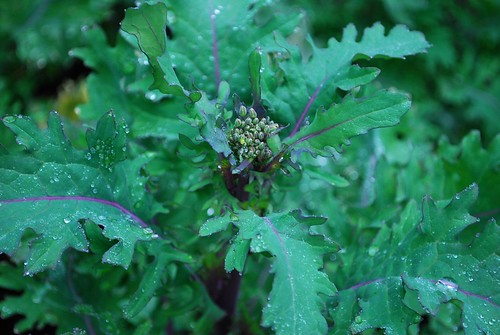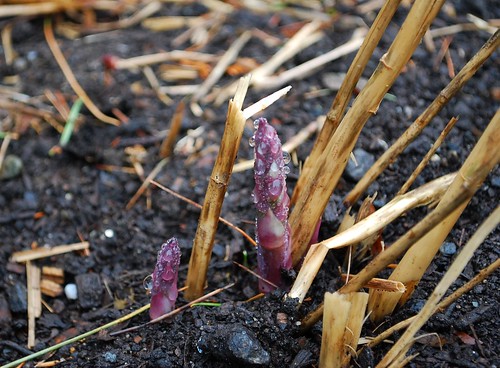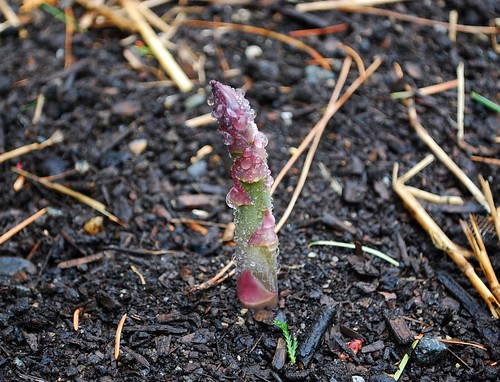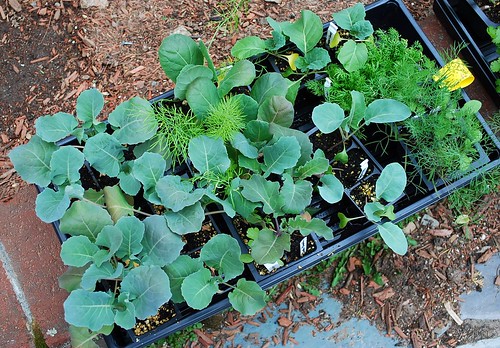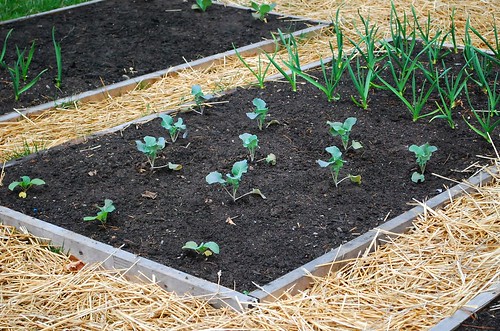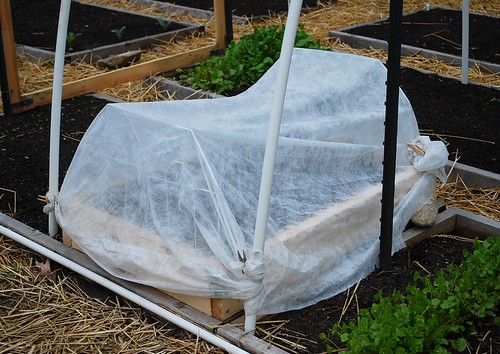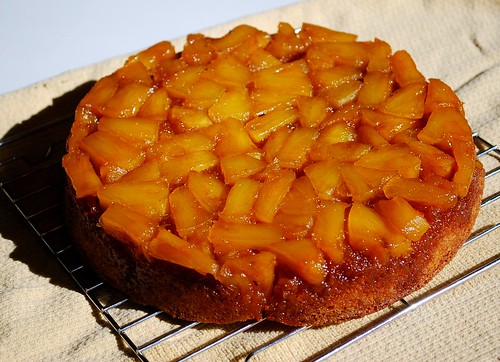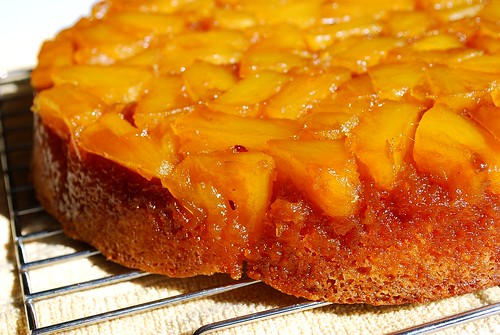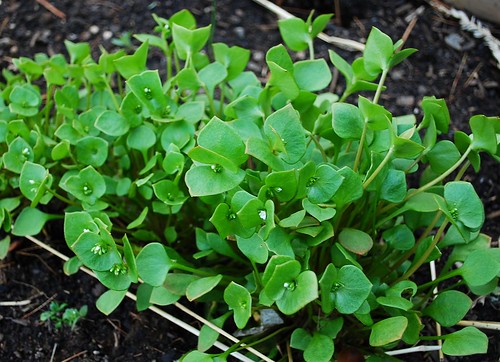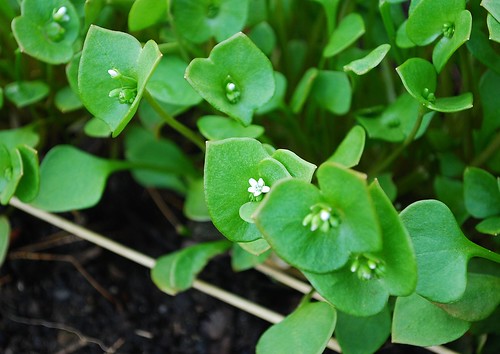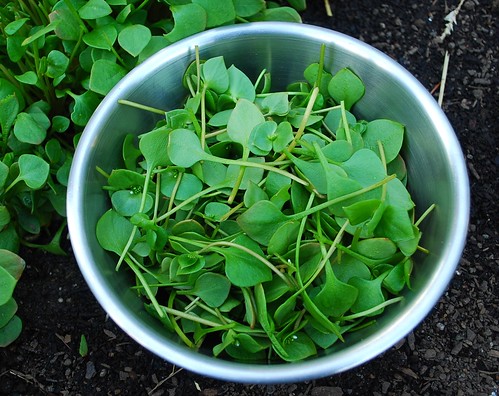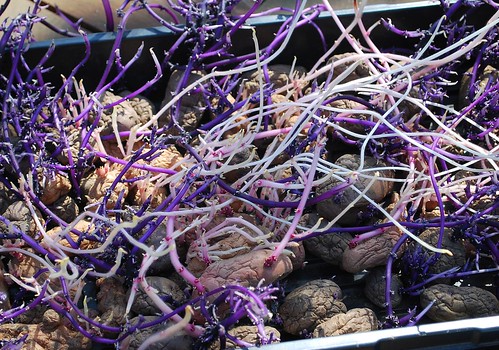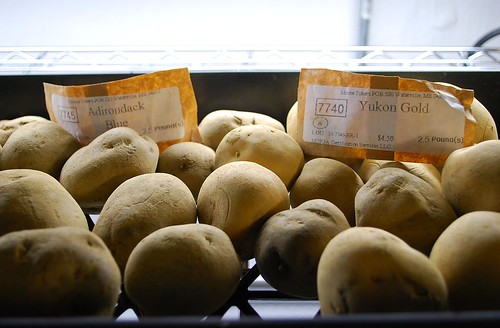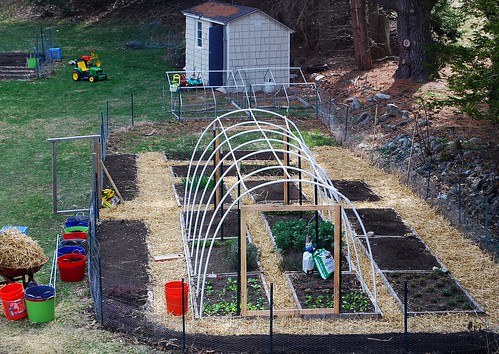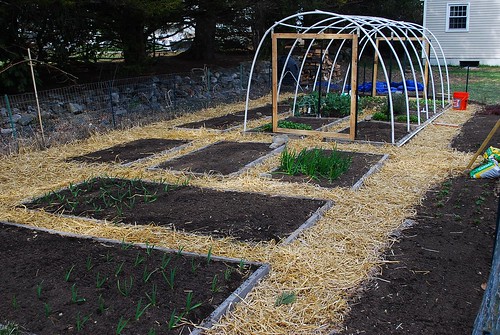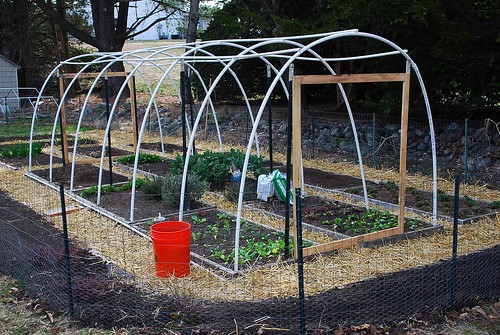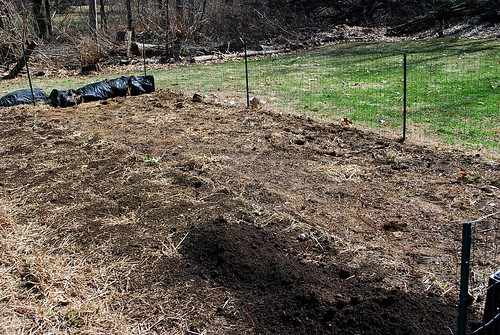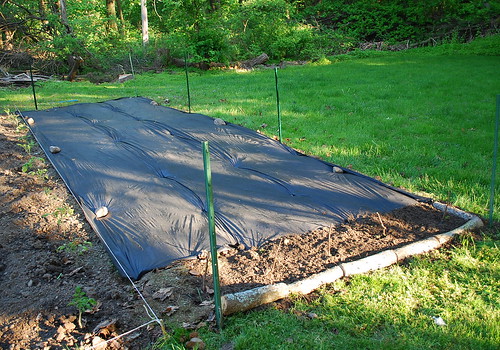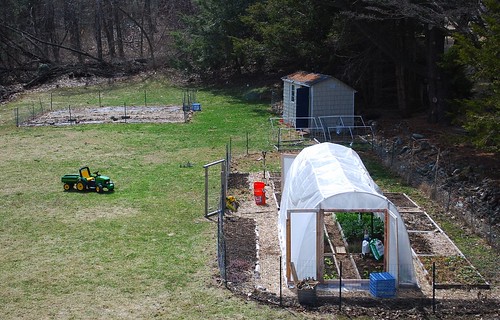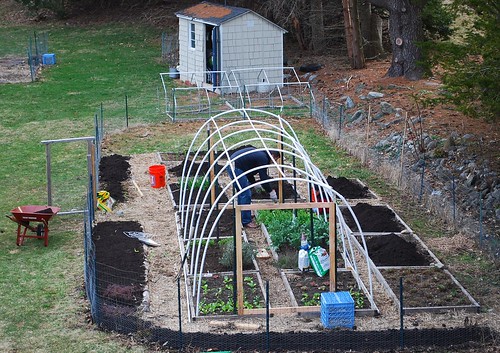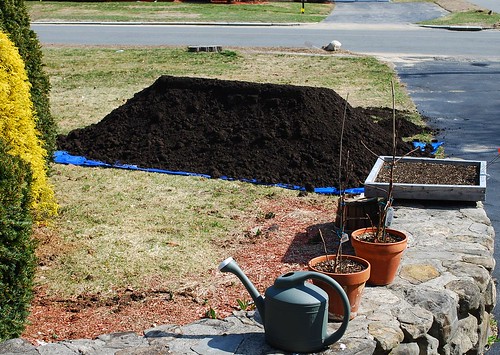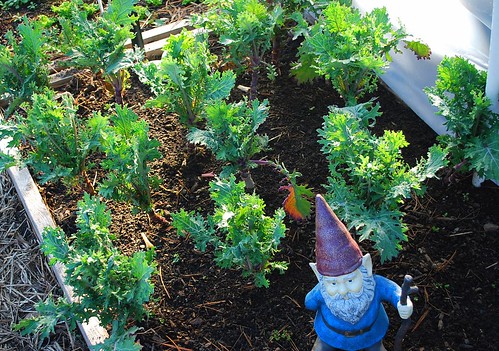
Now that the weather has warmed up a bit, the spring greens are growing rather quickly.
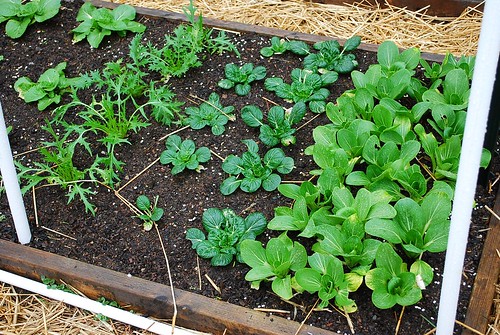
I will begin harvesting the Shanghai bok choy (right) in a couple days. Personally, I like my Asian greens on the smaller/younger side. The tatsoi (middle) will require another week or two.
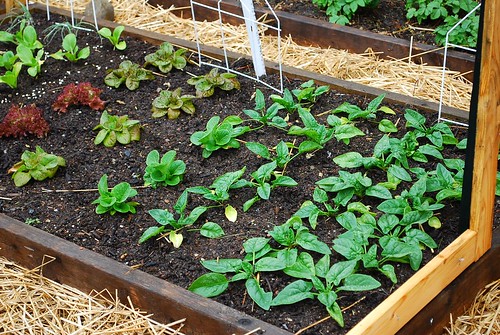
I can now harvest some spinach leaves as well (right). The variety I'm growing this spring is "Regiment" and I have to say, I like it much better than "Space". I'm growing several varieties of lettuce this spring. Winter Density (middle) is growing particularly fast.
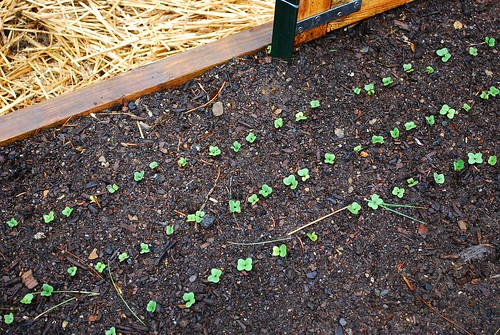
The French Breakfast radishes are up. Unlike carrots and beans, radishes always seem to germinate well in our garden.
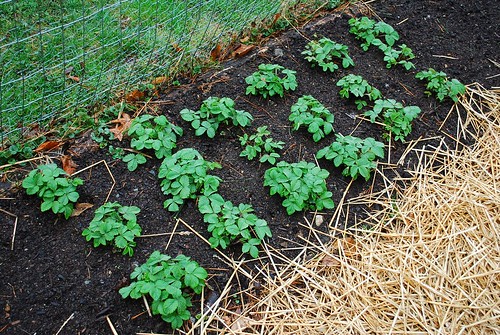
My red and yellow wonder strawberries are leafing up fast. The first flowers don't seem too far behind. I have a second bed with three times as many plants, which will need to be located to another part of the garden. I'm hoping to use them as a mini hedge around my garden fence to keep the weeds down.
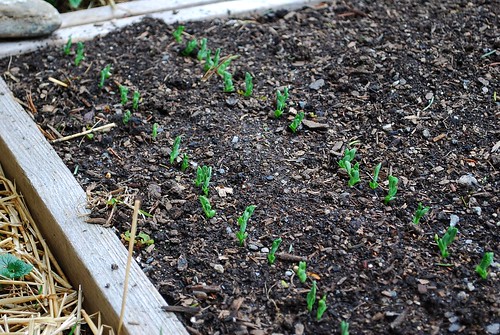
My snow and shell peas are up. I was really happy that germination was close to 100%. These will have to be thinned. The shoots are really tasty in salads or stir-fried.
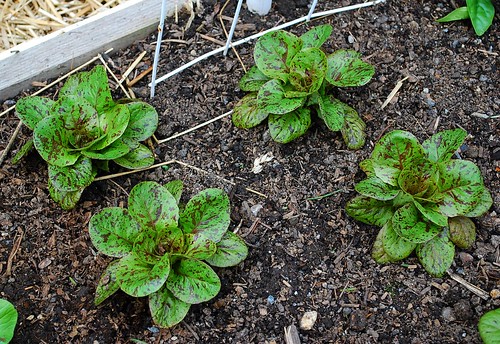
Another photo of my speckled romaine lettuce.

It didn't take very long time for last year's thyme and sage to bounce back.
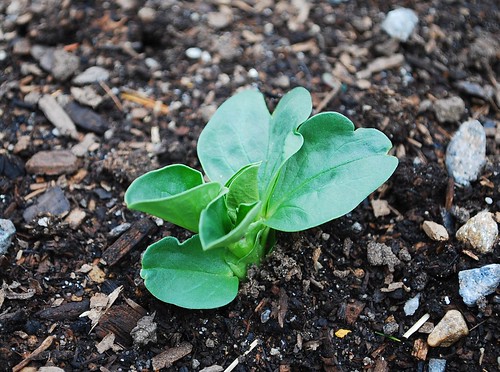
After a very long wait, the fava beans are up. I'm growing three varieties this year. I decided to hedge my bets and start additional seeds indoors. Germination ended up being around 90% so I transplanted my excess seedlings in another bed. We have about 80 fava bean plants - 10 times as many as last year, which is fine by me since they are one of our favorite veggies.
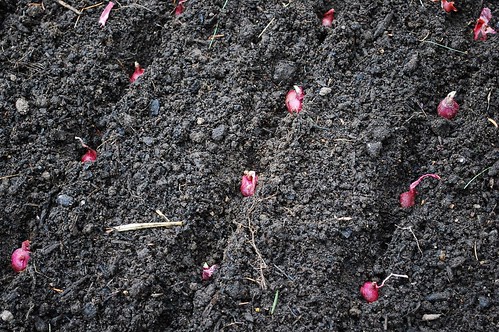
I also planted some red onion sets this weekend. Is it awful that I don't feel bad about not starting them from seed this year?
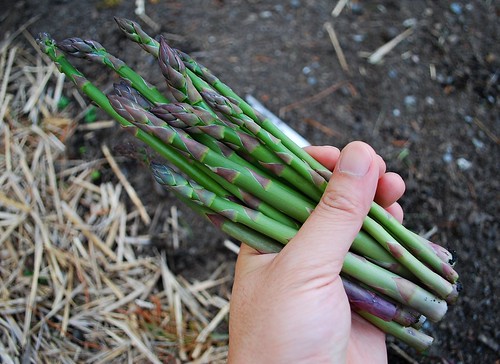
Finally, I harvested my first Jersey Supreme asparagus spears today! They sort of sneaked up on me as the shoots were tiny this past weekend. Luckily, I made a point to check on them again today. I would hate to have missed out on this first crop. Oh, and boy were they delicious simply steamed with a bit of butter. I'd never eaten asparagus that was cooked within minutes of being picked. I don't think you can find anything as sweet or tender at the supermarket.
